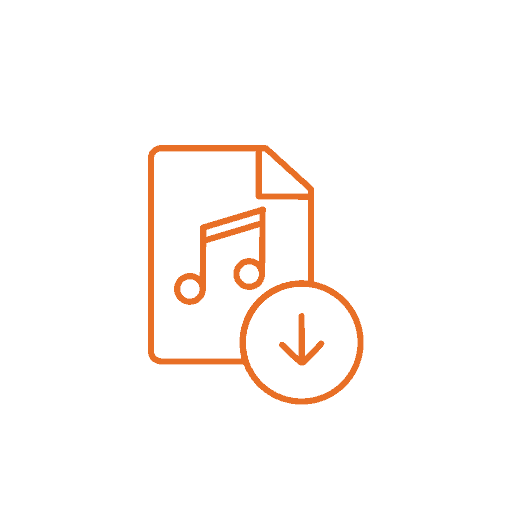Symptom Management: Bladder Dysfunction
October 5, 2020
For this ABCs of NMOSD podcast on “Symptom Management: Bladder Dysfunction,” GG deFiebre of SRNA is joined by Dr. Philippines Cabahug. Dr. Cabahug starts off by explaining how bladder function can be affected by NMOSD and the types of problems a person with NMOSD might experience. She discusses treatment options, including medications, catheterization, and Botox injections. She talks about UTIs and methods for avoiding them. Finally, Dr. Cabahug discusses InterStim, the effects of aging on the bladder, and when to establish care with a neurourologist.
Transcript
Intro: [00:00:00] ABCs of NMOSD is a 10-part education podcast series to share knowledge about neuromyelitis optica spectrum disorder, or NMOSD, a rare relapsing autoimmune disorder that preferentially causes inflammation in the optic nerves and spinal cord. ABCs of NMOSD Podcast Series is hosted by SRNA, the Siegel Rare Neuroimmune Association and in collaboration with The Sumaira Foundation for NMO, the Connor B. Judge Foundation and Guthy Jackson Charitable Foundation. This education series is made possible through a patient education grant from Viela Bio.
GG deFiebre: [00:00:59] Hello and welcome to the ABCs of NMOSD Podcast Series. This podcast is about managing bladder dysfunction in NMOSD. My name is GG deFiebre from the Siegel Rare Neuroimmune Association. ABCs of NMOSD is made possible through a patient education grant from Viela Bio. Viela Bio is dedicated to the development and commercialization of novel life-changing medicines for patients with a wide range of autoimmune and severe inflammatory diseases. Their approach to drug discovery is aimed at providing targeted treatments for improved outcomes for the thousands of patients who have few or no therapeutic options. For additional information about Viela, please visit vielabio.com.
For this podcast, we were joined by Dr. Philippines Cabahug. Dr. Cabahug earned her BS in physical therapy at the University of Philippines in 1994 and her medical degree at St. Luke’s-WHQ Memorial Philippines in 2000. She completed a physician medicine and rehabilitation residency at the Philippine General Hospital in 2005. She was awarded a UN-Merck scholarship to pursue her postgraduate diploma in gerontology and geriatrics at the University of Malta in 2004.
In 2009, she finished her internship in Internal Medicine at Atlanticare Regional Medical Center in Atlantic City, New Jersey. She completed her second physical medicine and rehabilitation residency in 2012 at Johns Hopkins Hospital and a fellowship in Spinal Cord Injury Medicine at Johns Hopkins Hospital and the Kennedy Krieger Institute in 2013. Upon completion of her fellowship, she joined the International Center for Spinal Cord Injury as a full-time physician.
[00:02:40] She received her board certification in PM&R and in Spinal Cord Injury Medicine in 2013. She is the director of the Musculoskeletal Ultrasound clinic at Kennedy Krieger Institute. She runs two clinics at KKI – a musculoskeletal diagnostic clinic and an ultrasound-guided intrathecal pump access clinic.
[00:03:00] She’s actively involved in the medical education as a faculty clinical instructor with the Department of Physical Medicine and Rehabilitation at the Johns Hopkins School of Medicine.
[00:03:09] So what is bladder dysfunction in NMOSD, and what causes it?
Dr. Philippines Cabahug: [00:03:16] So whenever you have a lesion or a disease that can affect your brain or your spinal cord, it can potentially affect other functions in the body. And one of the functions is how you empty your bladder or how you control having urination. The bladder has several centers in your central nervous system.
[00:03:42] One of them is in the brain which is called the pontine micturition center. And then the other one, you have your sacral or reflex center, which is found in your spinal cord, in the lowest parts of your spinal cord. As I said earlier, whenever you have an injury, lesion, or disease that affects the brain or the spinal cord or the communications between the two, this can result in having problems with either storing urine in your bladder or emptying your bladder.
[00:04:13] Your bladder is this wonderful organ that basically helps you store the urine. And then when it is time to empty, the bladder senses that it’s full, there’s information sent through the spinal cord to the brain and back to the bladder, and when you are in a socially acceptable situation, then you will empty your bladder.
[00:04:35] But whenever you have something like neuromyelitis optica, or NMO, that can potentially be affected.
GG deFiebre: [00:04:43] Okay, thank you so much for that. And if you could just talk a little bit about the treatments that are used for bladder dysfunction, maybe starting with the most common treatments and then moving into ones that are used after those common treatments?
Dr. Philippines Cabahug: [00:04:57] Yeah. So the treatment for bladder dysfunction or a neurogenic bladder is actually multimodal. It’s a combination of common sense, conservative management, and medications. Let’s start with things that a patient or a family member can do. One of them is making sure you have adequate fluid intake. And you also have to ensure that if you have the capability, you go to the bathroom at regularly scheduled intervals and watch for your fluid intake.
[00:05:36] If that doesn’t work, like we have this term called time toileting, that you make an effort to go to the toilet at regular intervals, watch how much fluid you take. We also combine them with other ways to manage your bladder. If you end up having an overactive bladder… And when I say overactive bladder, it means that there’s a lot of urine urgency, like when you feel you need to go, you really have to go, and frequencies, that you have to go to the bathroom frequently. So that’s your overactive bladder. When you have an overactive bladder, that means that you’re not able to store enough urine until you have to go to the bathroom.
[00:06:21] We give medications to try to calm down an overactive bladder. That’s another part of treatment, that’s giving medications. We have lots of medications that we can give to try to calm the bladder down, and those are called your anticholinergics. The most common would be oxybutynin. The most common trade name of that would be Ditropan, and that helps calm down the bladder. Then if you see on the television, there are different other medications like Vesicare. Still in the same family. The newest kid on the block is Mirabegron and the trade name is Myrbetriq. T What all of these medications do is they try to calm down the overactivity of the bladder. That being said, like any medication out in the market, there are potential side effects. And one of the more common side effects of this medication is that you could get dry mouth. Or you could get, if you have issues with constipation, you can get constipated. So these are the things I tell my patients to watch out for.
[00:07:29] If conservative management, time toileting, using oral medications is not as effective for an overactive bladder or a hyperactive bladder, then usually what I do is I refer my patients to a urologist to see if they would benefit from interventions. One of the more common ones is the use of Botulinum toxin injections to the bladder muscle. This is a very common procedure. And what they do is that they inject Botox into your bladder muscle, and that results in the bladder not being so hyperactive. If that doesn’t work then… And this is like really in severe cases where the problem is we have a very overactive bladder and the sphincter is also overactive, and the bladder becomes very thick and not compliant, then that’s where we have other options, such as bladder augmentation.
[00:08:42] Another way to address a bladder dysfunction… Like for example, if the problem is that you’re not able to empty or deploy your bladder, then that’s when we could do catheterization. And it could involve either using an indwelling catheter, like a Foley catheter. Sometimes we also use a suprapubic tube, so that’s a surgical procedure wherein they make a stoma to the lower abdomen and that’s where they insert the catheter. There’s actually less risk for infections, and – I’m talking about urinary tract infections – there’s less risk of having a urinary tract infection if you have a suprapubic tube.
[00:09:27] And then I think the most common one that people might be familiar with is they have to do what we call intermittent catheterization. Basically you catheterize yourself or somebody catheterizes you any time between four to six hours to empty your bladder.
GG deFiebre: [00:09:42] Great. Thank you so much for that overview. The next question is about treatments. ‘What treatments do you suggest for a neurogenic bladder? I have problems with urgency and not being able to empty out completely unless I press on my bladder or get in a specific position by leaning forward.’
Dr. Philippines Cabahug: [00:10:01] So that’s an interesting question because, from what I understand, there is a component of having an overactive bladder with a lot of that sensation of urgency, like ‘I have to go, I have to go.’ But also the problem is, aside from storage, there’s also a problem with completely emptying the bladder. So there are ways that you can do it. You could catheterize, for one. You could also…
[00:10:29] An overactive bladder, as I mentioned earlier, can benefit from being given medications, such as an anticholinergic medication. It’s in order to calm down the bladder to prevent that hyper contraction or hyper reactivity of the bladder. There is no one method fits all because it really depends on what type of bladder dysfunction that you have.
[00:10:55] And one of the helpful things that can help your clinician or your urologist or your physiatrist or urologist, whoever is helping manage your bladder dysfunction, deciding what the next step or what’s the most appropriate step to do, is to have a urodynamic study. This is a study that’s done in a doctor’s office. It doesn’t require any sedation or any downtime. You go home at the end of the day. It’s basically, it’s a special study wherein your bladder is filled with saline and you have a catheter inserted, and the catheter is special. It has sensors that tell us not only how much volume can your bladder hold, but also if the pressure inside your bladder is too high, it tells us how much your bladder is contracting by the pressure that’s generated. So based the urodynamic study, this will help your doctors decide if you need medication. Or if you already are on medication, is the medication appropriate enough or good enough to calm your bladder down, to keep your bladder happy.
[00:12:09] Fact that you need to bend over to try to empty your bladder. So usually, it might be a, just a pelvic floor issue or just a positioning issue. And I usually, I work with a urologist to try to figure that out.
[00:12:31] But, in this case, again, there’s no, I can’t really give a definite answer, but I would start on trying to calm your bladder down, and making sure that you completely empty your bladder.
[00:12:44] In some cases we might even have to consider if this person is not catheterizing… Like after you void, for example, you can voluntarily urinate. Sometimes we ask the patients to catheterize after to make sure that there’s nothing left behind. So, that’s also one thing you can do. But again, it’s kind of hard to say what needs to be done unless you are evaluated in clinic.
[00:13:11] You do a bladder diary to check how much fluid you actually take in and how much fluid you actually urinate out. The bladder unfortunately inaudible. So when I am not sure, or when the picture’s not clear to me, I usually go for a urodynamic study, and this will help me decide what best treatment options to recommend.
GG deFiebre: [00:13:34] Great, thank you. And then, how long can someone self-cath? Can someone do it for life? And are there other options besides self-catheterization?
Dr. Philippines Cabahug: [00:13:46] Self catheterization is, again, it is a very good method in order to empty your bladder. Actually in terms of, if you’re looking at the rate of frequency of getting urinary tract infections, in most people in previous studies, it has a lower rate of triggering a urinary tract infection or causing a urinary tract infection compared to your indwelling catheter like a Foley catheter.
[00:14:17] There’s no set time period of how long you do an intermittent catheterization. But one of the things that you always have to watch out for, because sometimes, some of the long-term complications is you could develop a urethral stricture, so that’s tightening of your urethra. That’s one.
[00:14:38] Sometimes you could develop some skin breakdown or irritation as well. So these are just the things that we basically just watch out for. But, in general, there’s no expiration date in terms of how long you have to catheterize when you do an intermittent catheterization. Other methods of catheterizing, as I mentioned earlier, is either you have an indwelling Foley catheter, which is again, the catheter is inserted through your urethra. Or you have a suprapubic tube, wherein you have a surgical procedure where a stoma or a channel is made from your skin going down to your bladder, and that’s where the catheter goes in. In children, for people with spina bifida, it is a different disease entity. There are other surgeries as well that we can do, like a Mitrofanoff, where it’s kind of like a suprapubic tube, but instead of in the lower abdomen, they make the stoma or the hole through your belly button. And they make a channel, they get the, the appendix, but they make a channel so that it’s a catheterizable channel through your belly button. But I see this typically more in children with spina bifida.
GG deFiebre: [00:16:05] Thank you. And then, we have a question that this person doesn’t have control of their bladder or bowel. They have a suprapubic catheter. Is there a chance that they could regain function of them both? And then relatedly, someone else asked if their spinal lesions are gone, can their bladder ever return to normal?
Dr. Philippines Cabahug: [00:16:23] That is actually a difficult question to ask… to answer, sorry, because I don’t know the extent of how involved the spinal cord is. So I’m not sure if I can say with certainty that bladder function will return because it really depends on how affected the cord is. And what part of the cord was affected.
[00:16:53] And sometimes even if, with the imaging, if there are no more spinal lesions, then you would think that you should regain function, but sometimes that’s not the case. Then you have to remember that technology is still developing. We see a lot, and thank God that MRI has developed to a point that we really have good visualization of the spinal cord. But obviously there are some things that we still can’t visualize. Unfortunately, I can’t answer that question with certainty.
GG deFiebre: [00:17:28] Thank you. And then, this other person was diagnosed in 2004. They’ve recovered a lot, but they’re incontinent daily. They feel like they don’t empty their bladder completely, and that they have an oncoming bladder infection, but then the next day they don’t feel like they’re getting an infection. Is this expected or normal, or what are your thoughts on this?
Dr. Philippines Cabahug: [00:17:47] My thought is, I would have, I would do a further evaluation of the bladder. It seems this is a classic overactive bladder where the bladder is overactive and feels irritated. And then you also have that component of incontinence.
[00:18:07] This is the point where I would, you know, have the patient come in, I’ll evaluate the patient. Most likely I would order for a urodynamic study, which will give me information, what the bladder is actively doing when there is urine in the bladder or when there’s fluid in the bladder. And then we can decide whether or not it would be… and I don’t know if this patient is on bladder medications, do we need to, I don’t know, do catheterization. Or if, if take, for example, if the urodynamic study shows that the pressures that are generated by the bladder is so high that there is risk for hydronephrosis or reflux, then that’s when we would have the discussion of other options such as Botox injections, for example.
GG deFiebre: [00:19:06] Okay. And then is there a natural way, like physical therapy or some other thing besides medications or Botox for bladder control? So this person is on Myrbetriq and looking to do Botox injections again, but they do it for a while and they can’t really know if they have any improvement. Is there any natural or physical therapy routes for improving bladder control?
Dr. Philippines Cabahug: [00:19:32] Sometimes some patients, a certain subset of patients with incomplete spinal cord injuries where it’s more of a problem of stress and, you know, those who have had some issues with stress incontinence before, or may have some pelvic floor weakness, they may benefit from a trial of pelvic floor therapy. But then again, it depends on how severely affected your spinal cord is. I’m not sure about other more natural methods that will help address bladder issues with regards to hyperactivity of the bladder or overactive bladder, or the overactive detrusor, meaning an overactive bladder muscle.
GG deFiebre: [00:20:29] So someone might get an ultrasound of their bladder and kidney and might see that on the report, it says that their bladder is trabeculated. What does this mean exactly? And can this be reversed, or how does it prevent your bladder from functioning normally?
Dr. Philippines Cabahug: [00:20:47] Okay. So think of it that the bladder is a very nice and strong and smooth muscle. When your bladder is being filled with urine, it’s compliant, so it’s going to stretch out. And then when it is time for you to empty your bladder, it’s going to contract. So the urine will go out of your bladder.
[00:21:15] Now, if you have bladder trabeculation, that means that normal, smooth surface, inside surface of the bladder, it’s become thickened and less compliant. And usually, you usually see a trabeculated bladder in overactive bladders. That being said, what’s the best way to try to, if not prevent it from getting worse, to reverse it. This is where the concept of trying to quiet down the bladder or decrease its hyperactivity kicks into play. This is where your medicines, you have your anticholinergics to prevent your bladder from spasming, or you could do the Botox injections.
[00:22:05] I always tell my patients, think of the bladder as this nice balloon that is made out of really strong muscle. Like any muscle, if it is, if you really keep on working out the muscle, the muscle gets thick and big. The bladder is one muscle that you don’t want to get thick or big, or have trabeculations, because if the bladder muscle is too thick, when it contracts, it generates a lot of pressure. And number two, if it’s too thick, there is less space for you to hold the urine or to store the urine.
[00:22:40] When you do cystoscopy, that’s when they have a camera and they look into inside your bladder, instead of seeing that normal, smooth surface of the bladder, they’ll see, it’s kind og like crinkly. Those are the trabeculations.
GG deFiebre: [00:22:53] And then, what is the best way to avoid getting a UTI?
Dr. Philippines Cabahug: [00:22:58] That is a very good question. And I think that’s a question that a lot of people ask. Let’s start off with, if you’re catheterizing, make sure that you follow your clean method in terms of your hygiene, make sure that you are adequately hydrated. Sometimes, we have patients who have to use a closed system catheter if you’re catheterizing.
[00:23:33] So some people use prophylaxis and honestly, in my experience, it works for some people, it doesn’t work for other people. There are many prophylaxes out in the market. And I’m talking about supplements. You hear about cranberry supplements, vitamin C, D-mannose. My personal opinion is if you want to try it, it’s not harmful.
[00:24:02] You know, it’s a good thing if it’s going to work, I’m not going to be surprised if it doesn’t work. But it does work for some people. The theory behind certain supplements, like for example, for cranberry, it prevents the bacteria from sticking to your bladder wall.
[00:24:21] But one of the best things, in my experience that helps you prevent a UTI is to make sure that your bladder is emptied properly, that you really, truly, there’s more, more or less a complete emptying in your bladder. Because if you retain a lot of urine in your bladder, that also exerts a lot of pressure inside your bladder wall, the bladder mucosa. And you could have, some, if the pressures are high enough, there’s this hypothesis that you could get micro tears in that bladder mucosa. And that’s where your bacteria could just stick in and stay there, and you can have a UTI. It’s kind of like when you have a paper cut and it gets infected. So that’s why, again, I have to go back to, important to, bladder hygiene, making sure you empty your bladder in a timely manner.
[00:25:15] If you need to take medications or other interventions, then we have to maintain that process, that program.
GG deFiebre: [00:25:25] Okay, thank you. So, can you explain what bladder issues InterStim is used for and how it works, and what is the effect of InterStim on someone’s ability to get an MRI?
Dr. Philippines Cabahug: [00:25:37] Okay. All right. So one of the ways that we manage neurogenic bladder is through a neuromodulation. When you do neuromodulation, it’s basically using electrical stimulus to modulate your sacral nerves. Your sacral nerves, particularly the S3 nerve, helps facilitate this, the bladder contraction, control, emptying. And that information is sent from your sacral nerves, going up to your spinal cord, up to the brain and down back again.
[00:26:15] So what the InterStim basically does, it’s an implant that’s placed and it stimulates your S3 nerves to help modulate the function of your bladder. Its indications are really for an overactive bladder, to help with urination. So this is something that can be done in your doctor’s office.
[00:26:44] And usually before you have a definitive treatment with the InterStim, there is a one-week period, roughly a one-week period where you have a trial of the InterStim to see if it does work for you. And, if the effect is significant enough that you would want to have that implanted.
[00:27:05] If during that trial period it works really well, then you go ahead an implantation of the InterStim. The first model of the InterStim is not MRI compatible. But the later models, I think there’s one that’s very small, the Micro, that’s MRI compatible. I think it was last year, there is actually a new kid on the block.
[00:27:32] And mind you, I do not have any financial ties to these companies. There’s one called Axonics, which is also MRI compatible, like the latest iterations of the Interstim. And it’s also small. So there’s InterStim, there’s an InterStim 2, and then there’s the Micro InterStim, and then there’s the Axonics. The later iterations of both of these brands are not only MRI compatible, but they are also rechargeable.
[00:28:08] The newer one, the newer kid on the block, Axonics, I think it has like a 15 year battery life, and you only have to recharge it once a month, roughly. So those are things that are done by urologists who are trained to do this. And it’s something that I would refer my patients to.
[00:28:28] That being said, if my patients have the earlier versions of the InterStim, that’s always been a concern because that is not MRI compatible. So in a person with NMO or MS or TM, somebody who will need a repeat MRI in the future, that’s going to be one of the major things that would make me hesitant to recommend this because we will need MRIs in the future.
[00:29:01] But again, as I said earlier, the later models are MRI compatible.
GG deFiebre: [00:29:09] Great. Thank you so much. And then we did get a question that’s this person is 87, but they were diagnosed in 2002. They’ve been able to walk and be active since about six months after, but now they’re experiencing problems with controlling urinating. Is it due to age, or could it be related to their rare neuroimmune disorder? And how do you differentiate that in someone who might be getting older with one of these diagnoses?
Dr. Philippines Cabahug: [00:29:33] Again, that’s an interesting question because as much as possible, we do not want to blame age for everything. Though understandably, for any human being, as we grow old, our functions slow down and they’re not as effective. So in an older person, there is, traditionally, we expect there’s less control of the bladder. In females, we see more stress incontinence. In males, they, you know, their prostate gets bigger.
[00:30:03] So that being said, if you’ve been living with a neurologic disease or a spinal cord disorder for a long time, you’re not exempt from the effects of aging. And actually, the changes of an aging body might even be exacerbated by the fact that you are living with a preexisting condition such paralysis and previous bowel or bladder dysfunction.
[00:30:33] So it is a little bit hard… not really a little bit hard. It takes more of an effort to differentiate if what we’re dealing is just because of old age or is it related to something that’s ongoing with the bladder. So that being said, again, it all boils down to getting a good history and to evaluate and try to figure out, is this change in this bladder dysfunction or worsening of your bladder incontinence? Is it because you are not able to get to the bathroom in time because it takes you longer to get to the bathroom? Or is it because you can’t hold your urine. Or is it because you’re older and you’re female, and your pelvic floor muscles are a little bit weaker and you’re more prone to stress incontinence.
[00:31:28] There are many things to consider. I apologize, it’s not a straight answer, but there are many factors to consider, especially of somebody who’s getting older. But the most important thing is to make sure that we don’t forget to look for other causes and not just blame everything on old age.
GG deFiebre: [00:31:49] Great. Thank you. And then, if someone is seeing a physiatrist who’s managing their urological issues, at what point would you generally recommend that they see a urologist who maybe specializes in neurological issues of the bladder?
Dr. Philippines Cabahug: [00:32:06] In my practice, I actually would recommend my patients to establish care with a urologist early on. Because down the line, if this is a chronic condition, we would have to do a cystoscopy to monitor how the bladder is. That being said, if you have a physiatrist who’s initially managing the neurogenic bladder, usually we would refer our patients to a urologist if, for example, we’ve tried conservative management medications, and we’re still having problems with achieving bladder continence, basically means that you’re still having a lot of urgency or you’re having frequent UTIs, or you’re always being incontinent. That’s when I would refer a patient to a urologist.
[00:33:07] I would refer a patient to a urologist, for example, if I would need a urodynamic study. In my practice. I’m lucky. I have one of my colleagues who does urodynamic studies. But, I can’t speak for other people if they have that same set up. But, if there’s a need for urodynamic studies and you don’t have anyone in your practice that does urodynamic studies, and I think that’s also a good time to refer my patients to a urologist. That being said, one of the challenges is finding a urologist who is comfortable with a neurogenic bladder that’s related to spinal cord injury.
[00:33:58] Because NMO is a rare neurologic disorder. If you try to look for somebody who is an expert in bladders related to NMO, you will not see one outright. But if you would look for somebody like a urologist who has experience in managing patients with neurogenic bladder associated with spinal cord injury, that opens up more of your pool in finding a specialist who will help take care of you.
[00:34:27] Great. Thank you so much. I really appreciate it.
LISTEN & SUBSCRIBE
TO PODCAST
DOWNLOAD MP3
DOWNLOAD TRANSCRIPT






 Philippines Cabahug, MD
Philippines Cabahug, MD





